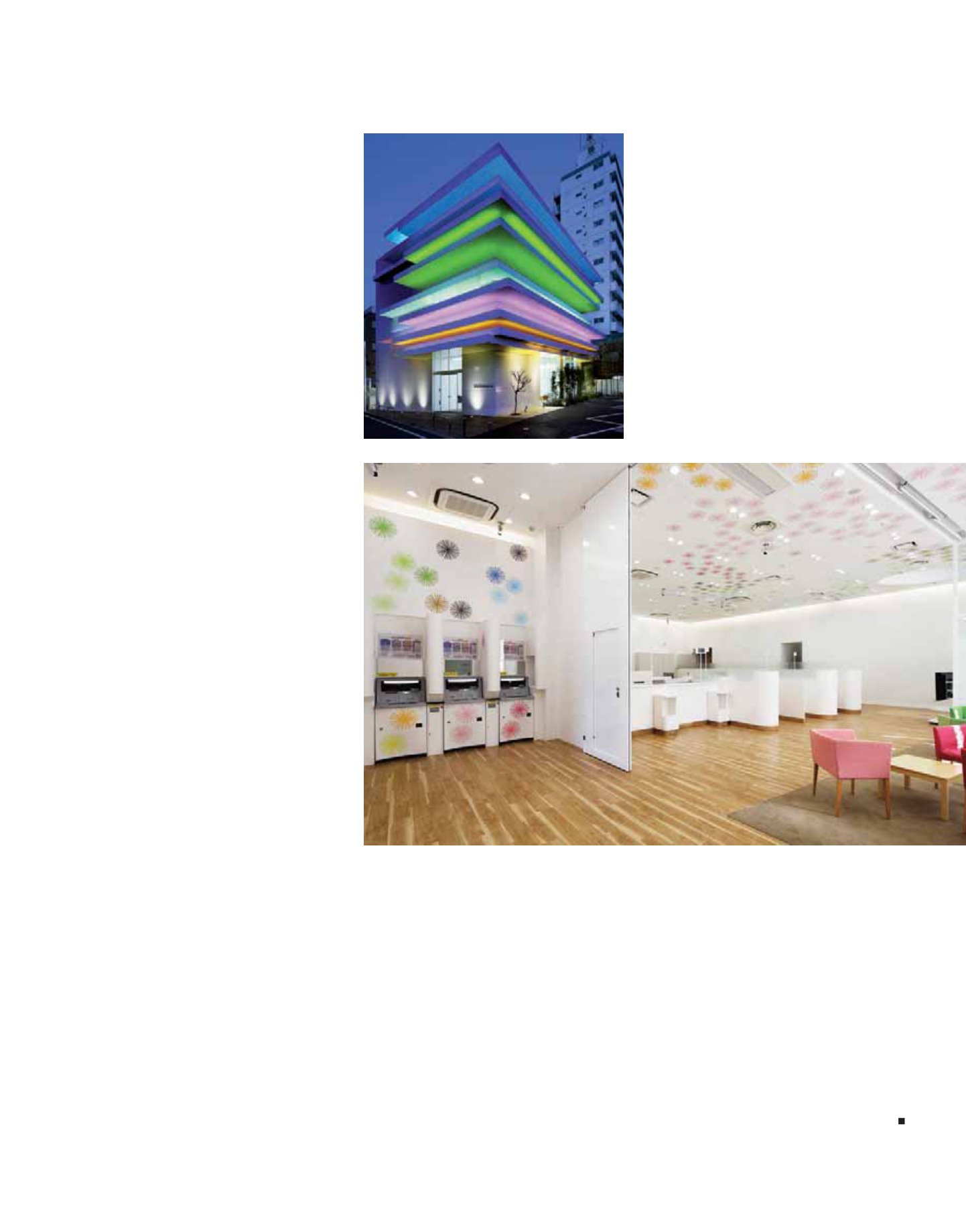
29
Officelayout 148
gennaio-marzo 2012
5
luglio-settembre 2014
who are more or less willing to use innovative
technological tools. In substance, a consumer-
oriented technology in line with the experiences –
and expectations – generated by the mobile
revolution and the set of uses it brings in the
form of apps, touchscreens and other
techniques. For this reason, the presence of
technological devices of recognition and
welcome in banking facilities, which can
stimulate curiosity and provide useful,
“strategic” information, is perceived not only
as a signal of innovation, but also and above
all as a matter of care for the clientele.
Conclusions
Customers will probably continue to use retail
banking facilities for a certain range of
operations. So what can we expect? How will
banking facilities be conceived, designed and
built in the years to come?
The question for banks is the identification of a
new model of service that responds to the
expectations of customers while at the same time
reducing costs. But how? Based on the evolutions
described above and experiences from other
sectors, the main drivers are:
• Fewer retail offices, but heavy ones:
if
customers visit banking facilities less than in the
past, when they do enter the facility they should
be able to find all the operative options. This
means not “light” outlets but “heavy” ones, with
the widest range of operative leeway. And, of
course, with more square meters of space.
• Outlets not in proximity, but more
convenient:
since personal contact is less
frequent, it becomes important to extend opening
hours, in easily reached locations, providing
parking and proximity to other services (a
shopping center, for example, or a railroad
station in the historical center of the city).
• Multiaccess:
operative processes should adapt
to the habits of customers in the use of
technology, providing operations that start on
one channel and are completed in another, and
constant alignment (track record) of operational
information.
• Mobility:
staff of banking offices should be
more mobile in the territory, meeting customers
in their preferred places (home, workplace).
Mobile technologies support implementation and
conclusion of sales and post-sales processes, also
“out in the field.”
• Showroom & customer experience:
fewer but
larger facilities permit achievement of the right
critical mass to justify insertion of hospitality
spaces (coffee corners, wi-fi areas), support zones
(assistance areas, baby parking, etc.) and
commercial and marketing initiatives (branch
office open days, thematic seminars/encounters).
The idea is to develop a series of “service centers”
to distribute in a given geographical area, in
keeping with the needs and availability of use on
the part of customers. It is necessary to
rationalize geographical coverage through new
forms of physical presence that involve fewer
points, each of which has a wider operative
radius. Levels of service should also be improved
while reducing operative risk, using technologies
like videoconferencing to permit teams of expert
product consultants to also reach the most
distant facilities to support the staff and the
customers in the most complex operations.
In short, technological innovation, together with
demographic evolution and the trend of macro-
economic variables over the last twenty years
have decreed the demise of the traditional teller’s
window. Together, these forces are contributing to
shape the retail banking facilities of the future.
L’idea di Banca in Giappone
Le filiali della banca giapponese Sugamu Shimura
sono progettate con l'obiettivo di creare ambienti
confortevoli e di stampo residenziale. Nell'agenzia
di Tokyo (nella foto) i prospetti esterni e gli interni
sono definiti da colori forti e vivaci. La fluidità e la
flessibilità sono gli elementi progettuali fondanti,
con conseguente integrazione fra sportelli di
consulenza, ATM, e aree di attesa. Il lighting
design è uno dei criteri compositivi fondanti del
progetto: l'intensità e i colori della luce artificiale
cambiano in funzione del variare delle fasi della
giornata e delle stagioni, mentre tagli ellittici
ricavati a soffitto inondano di luce naturale gli
ambienti. La luce è protagonista anche negli orari
di chiusura, grazie ai prospetti soggetti a
illuminazione indiretta che diventando sculture
metropolitane


